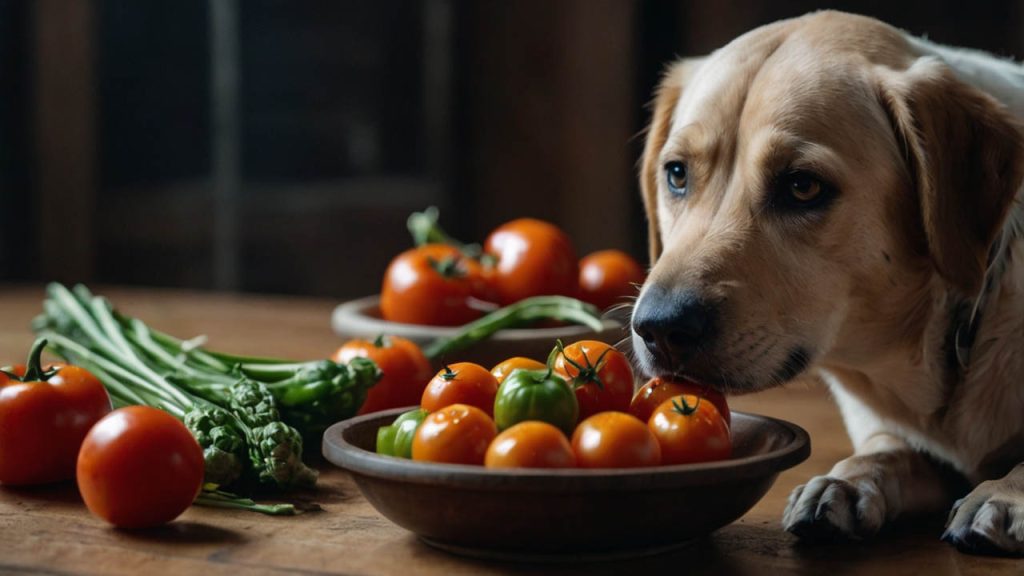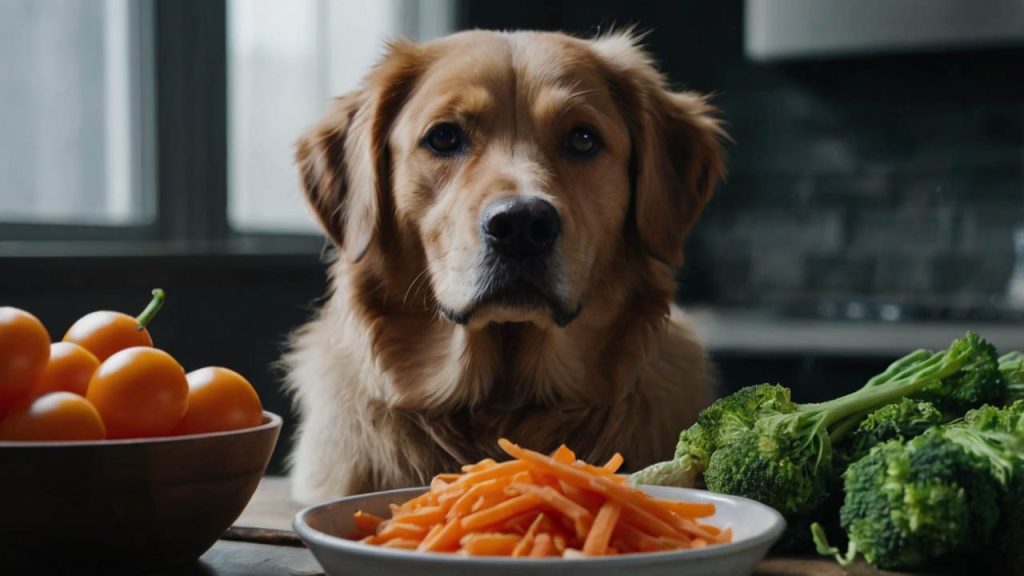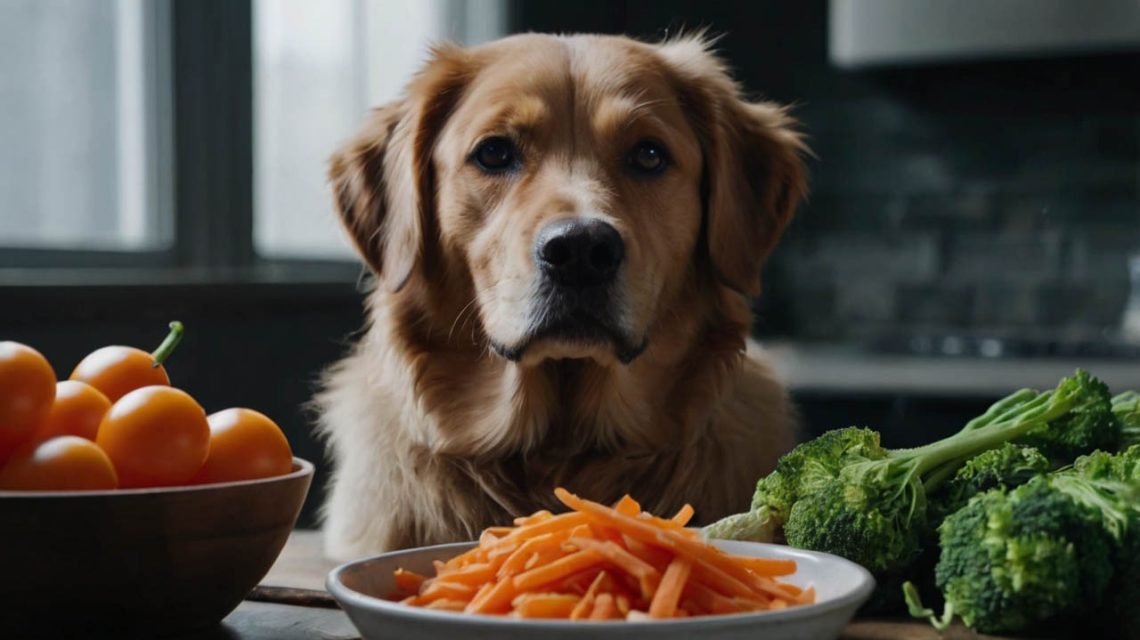Introduction: Safe Vegetable Nutrition for Dogs
Understanding what vegetables can dogs eat helps pet owners provide nutritious, varied diets that support optimal health and longevity. According to the American Kennel Club Canine Health Foundation, incorporating appropriate vegetables into your dog’s diet can provide essential vitamins, minerals, and fiber that complement commercial dog food. Moreover, research from veterinary nutritionists indicates that dogs consuming moderate amounts of safe vegetables show improved digestion, healthier weight management, and enhanced immune function compared to those on exclusively commercial diets.
The question of what vegetables can dogs eat becomes increasingly relevant as pet owners seek natural ways to enhance their dogs’ nutrition and address health concerns like obesity, which affects 56% of dogs in the United States. Studies from the University of California Davis School of Veterinary Medicine demonstrate that vegetables can comprise up to 10% of a dog’s daily caloric intake, providing valuable nutrients while helping maintain healthy weight. Furthermore, vegetables offer low-calorie treat alternatives that satisfy dogs’ desire for variety without contributing to weight gain.
Determining safe vegetables requires understanding both nutritional benefits and potential risks, as dogs process plant matter differently than humans. While dogs evolved as omnivores capable of digesting various plant materials, certain vegetables that humans consume safely prove toxic to canines. Therefore, this comprehensive guide examines scientifically-verified safe vegetables, proper preparation methods, appropriate portions, and critical warning signs, empowering you to make informed decisions about incorporating vegetables into your dog’s diet.
What Vegetables Can Dogs Eat: The Safe List
Green Vegetables Dogs Can Enjoy
Green vegetables provide exceptional nutritional value when considering what vegetables can dogs eat safely. Broccoli offers vitamin C, fiber, and cancer-fighting compounds, though it should comprise less than 10% of daily intake to prevent gastric irritation. Subsequently, steaming broccoli makes it easier to digest while preserving nutrients that support immune function and cellular health.
Green beans rank among the safest vegetables for dogs, providing fiber, vitamins K and C, and manganese without excessive calories. Fresh, frozen, or canned green beans (without added salt) make excellent treats for overweight dogs. Research shows that replacing 10% of regular food with green beans helps dogs lose weight while maintaining satiation.
Spinach contains iron, antioxidants, and vitamins, though moderation proves essential due to oxalate content. Dogs with kidney issues should avoid spinach entirely, while healthy dogs can enjoy small amounts occasionally. Furthermore, cooking spinach reduces oxalate levels while maintaining beneficial nutrients.
Brussels sprouts, cucumber, and celery round out safe green options. These vegetables provide hydration, vitamins, and fiber while being low in calories. Moreover, celery’s natural breath-freshening properties make it a functional treat that many dogs enjoy.

Root Vegetables and Squashes
Understanding what vegetables can dogs eat includes recognizing the value of root vegetables. Carrots stand out as exceptional dog treats, providing beta-carotene, fiber, and satisfying crunch that promotes dental health. Raw carrots help clean teeth naturally, while cooked carrots offer easier digestion for senior dogs or those with dental issues.
Sweet potatoes deliver complex carbohydrates, vitamin A, and fiber that support digestive health. Veterinary nutritionists recommend cooked sweet potatoes for dogs with sensitive stomachs or digestive issues. Additionally, dehydrated sweet potato slices make excellent training treats without artificial additives.
Pumpkin deserves special recognition for its digestive benefits. Plain, cooked pumpkin (not pie filling) helps regulate digestion, firming loose stools and softening constipation. Studies indicate that 1-4 tablespoons of pumpkin daily can resolve minor digestive issues in 80% of dogs.
Regular potatoes require cooking before serving, as raw potatoes contain solanine, a toxic compound. Baked or boiled potatoes without seasonings provide energy and potassium. However, avoid green potatoes or those with sprouts, which contain higher toxin levels.
Nutritional Benefits When Dogs Eat Vegetables
What Vegetables Can Dogs Eat for Health
Vegetables contribute essential nutrients often limited in commercial dog foods. Antioxidants from colorful vegetables combat free radicals, potentially reducing cancer risk and slowing aging processes. Research from Colorado State University found that dogs consuming vegetables regularly showed 70% lower rates of certain cancers.
Fiber from vegetables supports digestive health and weight management. Soluble fiber helps regulate blood sugar and cholesterol, while insoluble fiber promotes regular bowel movements. Furthermore, fiber creates satiety, helping dogs feel full with fewer calories.
Phytonutrients unique to vegetables provide anti-inflammatory benefits. These compounds help manage chronic conditions like arthritis and support overall immune function. Moreover, vegetables’ water content aids hydration, particularly beneficial for dogs who drink insufficiently.
Vitamins and Minerals from Vegetables
Discovering what vegetables can dogs eat reveals excellent vitamin sources. Vitamin A from orange vegetables supports vision, immune function, and skin health. Beta-carotene converts to vitamin A as needed, preventing toxicity risks associated with supplements.
B-complex vitamins in vegetables support energy metabolism and nervous system function. Leafy greens provide folate essential for cell division and DNA synthesis. Additionally, these vitamins help senior dogs maintain cognitive function.
Minerals from vegetables complement commercial diets effectively. Potassium supports heart function and muscle contractions, while iron prevents anemia. Furthermore, calcium from dark leafy greens strengthens bones, though absorption rates vary.
Preparation Methods: What Vegetables Can Dogs Eat Safely
Cooking and Serving Techniques
Proper preparation ensures vegetables remain safe and digestible for dogs. Steaming preserves nutrients while softening tough fibers that dogs struggle to digest raw. Subsequently, steamed vegetables prove ideal for senior dogs or those with compromised digestion.
Raw vegetables offer different benefits when considering what vegetables can dogs eat for dental health. Crunchy raw vegetables help remove plaque and massage gums. However, chopping vegetables into appropriate sizes prevents choking hazards, especially for small dogs.
Pureeing vegetables maximizes nutrient absorption for dogs with digestive issues. Blended vegetables mix easily with regular food, ensuring consumption without picking around unfamiliar items. Moreover, frozen vegetable purees make convenient portion-controlled treats.
Portion Control and Frequency
Understanding appropriate portions when learning what vegetables can dogs eat prevents digestive upset. Vegetables should comprise no more than 10% of daily caloric intake for most dogs. Overfeeding vegetables can cause gas, diarrhea, or nutrient imbalances.
Introduction requires gradual progression to avoid digestive issues. Start with one tablespoon of cooked vegetables mixed into regular food. Subsequently, increase portions over 5-7 days while monitoring stool consistency and gas production.
Individual tolerance varies significantly between dogs. Some dogs digest vegetables easily, while others experience upset with minimal amounts. Furthermore, keeping a food diary helps identify problematic vegetables and optimal portions for individual dogs.
Toxic Vegetables to Avoid
What Vegetables Can Dogs Never Eat
While exploring what vegetables can dogs eat, understanding toxic vegetables proves equally crucial. Onions and garlic top the danger list, containing compounds that destroy red blood cells causing potentially fatal anemia. Even small amounts accumulate over time, making complete avoidance essential.
Wild mushrooms pose extreme danger, with some varieties causing liver failure or death within hours. Store-bought mushrooms like button or portobello prove safe when cooked plain. However, teaching dogs to avoid all mushrooms prevents tragic wild mushroom consumption.
Tomatoes, particularly green ones and plants, contain solanine causing gastrointestinal upset and neurological symptoms. Ripe tomatoes contain minimal toxins but offer little nutritional value. Moreover, tomato plants in gardens require protection from curious dogs.
Avocados contain persin, toxic to dogs in large quantities. While flesh contains less persin than pits or leaves, the high fat content can trigger pancreatitis. Additionally, avocado pits present choking hazards requiring immediate veterinary attention if swallowed.
Recognizing Toxicity Symptoms
Knowing danger signs helps when determining what vegetables can dogs eat safely. Gastrointestinal symptoms like vomiting, diarrhea, or excessive drooling often appear first. These symptoms may develop immediately or hours after consumption.
Neurological symptoms indicate severe toxicity requiring emergency treatment. Tremors, seizures, weakness, or coordination loss demand immediate veterinary attention. Furthermore, lethargy or unusual behavior following vegetable consumption warrants professional evaluation.
Blood-related symptoms from onion or garlic toxicity develop gradually. Pale gums, weakness, rapid breathing, or dark urine indicate anemia. Moreover, these symptoms may appear days after consumption, making dietary history important for diagnosis.

Special Dietary Considerations
What Vegetables Can Dogs Eat with Health Conditions
Dogs with diabetes benefit from low-glycemic vegetables when determining what vegetables can dogs eat therapeutically. Green beans, broccoli, and leafy greens help regulate blood sugar. Research shows diabetic dogs consuming appropriate vegetables require less insulin adjustment.
Overweight dogs find vegetables invaluable for weight management. Replacing 25% of regular food with low-calorie vegetables reduces caloric intake while maintaining volume. Studies demonstrate that dogs lose weight more successfully with vegetable supplementation versus simple portion reduction.
Dogs with kidney disease require careful vegetable selection. Low-phosphorus vegetables like green beans and carrots prove safer than high-phosphorus options. Furthermore, avoiding high-oxalate vegetables prevents kidney stone formation.
Allergic dogs may react to certain vegetables despite general safety. Common vegetable allergens include corn, soy, and wheat-containing products. Additionally, novel vegetables introduced gradually help identify potential allergens.
Age-Specific Vegetable Guidelines
Puppies have different requirements when learning what vegetables can dogs eat safely. Their developing digestive systems handle vegetables poorly before 12 weeks old. Subsequently, introduce vegetables gradually after 3 months, starting with easily digestible options like cooked sweet potato.
Senior dogs benefit from softer, cooked vegetables supporting their changing nutritional needs. Antioxidant-rich vegetables combat age-related oxidative stress. Moreover, fiber helps manage common senior issues like constipation and weight gain.
Pregnant and nursing dogs require careful vegetable supplementation. While vegetables provide beneficial nutrients, excessive amounts may reduce protein intake. Furthermore, consulting veterinarians ensures appropriate vegetable inclusion during reproduction.
Incorporating Vegetables into Diet
What Vegetables Can Dogs Eat as Treats
Using vegetables as training treats offers healthy alternatives to commercial options. Carrot sticks, green beans, and cucumber slices work well for repetitive training. Subsequently, varying vegetables prevents boredom while maintaining low caloric intake.
Frozen vegetables provide cooling summer treats. Frozen green beans or carrot sticks soothe teething puppies naturally. Moreover, frozen vegetable ice cubes offer hydration and entertainment during hot weather.
Dehydrated vegetables create convenient, shelf-stable treats. Home dehydrators or low-temperature ovens produce crispy vegetable chips dogs love. Furthermore, these treats travel well for training classes or trips.
Mixing Vegetables with Regular Food
Successfully incorporating vegetables requires strategic mixing techniques. Start by finely chopping or pureeing vegetables into regular food. Dogs often accept vegetables better when mixed with familiar flavors.
Creating vegetable-enhanced meals improves nutrition without complete diet overhaul. Adding 10% vegetables to commercial food boosts fiber and micronutrients. Additionally, vegetables add variety preventing food boredom.
Homemade dog food incorporating vegetables requires careful formulation. Consulting veterinary nutritionists ensures balanced nutrition meeting all requirements. Moreover, improper homemade diets can cause serious deficiencies despite good intentions.
Common Mistakes to Avoid
Preparation Errors
Understanding what vegetables can dogs eat includes avoiding common preparation mistakes. Seasoning vegetables with salt, garlic, or onion powder creates toxicity risks. Plain preparation without human seasonings ensures safety.
Serving vegetables too large poses choking hazards, especially for small dogs. Appropriate sizing based on dog size prevents emergencies. Furthermore, supervising initial vegetable consumption identifies individual chewing habits.
Canned vegetables often contain excessive sodium harmful to dogs. Choosing fresh or frozen vegetables eliminates sodium concerns. Additionally, thoroughly rinsing canned vegetables reduces but doesn’t eliminate sodium content.
Overfeeding Vegetables
Excessive vegetable consumption causes digestive upset regardless of which vegetables dogs eat. Gas, diarrhea, and bloating indicate overfeeding. Moreover, too many vegetables can interfere with nutrient absorption from regular food.
Replacing too much regular food with vegetables creates nutritional imbalances. Dogs require specific protein and fat levels vegetables cannot provide. Furthermore, vegetable-heavy diets may lead to malnutrition despite appearing healthy.
Introducing multiple vegetables simultaneously prevents identifying problem foods. Single vegetable introduction over several days reveals individual tolerances. Additionally, this approach helps identify allergies or sensitivities.
Monitoring and Adjusting
Tracking Response to Vegetables
Observing how dogs respond helps determine what vegetables can dogs eat individually. Stool quality indicates digestive tolerance – firm stools suggest good tolerance while loose stools indicate issues. Subsequently, adjusting types or amounts based on stool quality optimizes vegetable inclusion.
Energy levels and coat quality reflect nutritional adequacy. Improved energy and shinier coats suggest beneficial vegetable addition. However, decreased energy might indicate excessive fiber interfering with nutrient absorption.
Weight changes require portion adjustments. While vegetables aid weight loss, excessive amounts may cause unhealthy weight loss. Moreover, regular weight monitoring ensures vegetables support rather than compromise health.
When to Consult Professionals
Veterinary consultation helps determine what vegetables can dogs eat with existing health conditions. Medical conditions may contraindicate certain vegetables despite general safety. Furthermore, veterinarians provide personalized recommendations based on individual health status.
Persistent digestive issues despite careful introduction warrant professional evaluation. Some dogs have underlying conditions preventing vegetable digestion. Additionally, veterinarians can recommend digestive supplements supporting vegetable tolerance.
Nutritionist consultation benefits owners wanting comprehensive dietary planning. Veterinary nutritionists calculate precise vegetable amounts optimizing nutrition. Moreover, they formulate balanced homemade diets incorporating appropriate vegetables.
Conclusion: Enhancing Your Dog’s Diet with Vegetables
Understanding what vegetables can dogs eat empowers you to enhance your dog’s nutrition naturally and safely. Throughout this comprehensive guide, you’ve discovered numerous safe vegetables offering valuable nutrients, learned proper preparation methods, and understood critical safety considerations. The key lies in moderation, gradual introduction, and careful observation of your individual dog’s response to different vegetables.
Remember that while vegetables provide excellent nutritional supplements, they should complement, not replace, balanced commercial dog food. Every dog responds differently to vegetables based on age, health status, and individual tolerance. Start slowly with single vegetables in small amounts, monitoring your dog’s response before expanding variety or increasing portions.
Take action today by selecting one safe vegetable from this guide to introduce to your dog. Begin with a small portion of cooked carrot or green bean mixed into their regular meal. Document your dog’s response over the next week, noting any changes in digestion, energy, or overall wellbeing. Most importantly, consult your veterinarian before making significant dietary changes, especially if your dog has existing health conditions. Your thoughtful approach to incorporating vegetables will contribute to your dog’s long-term health and happiness.


